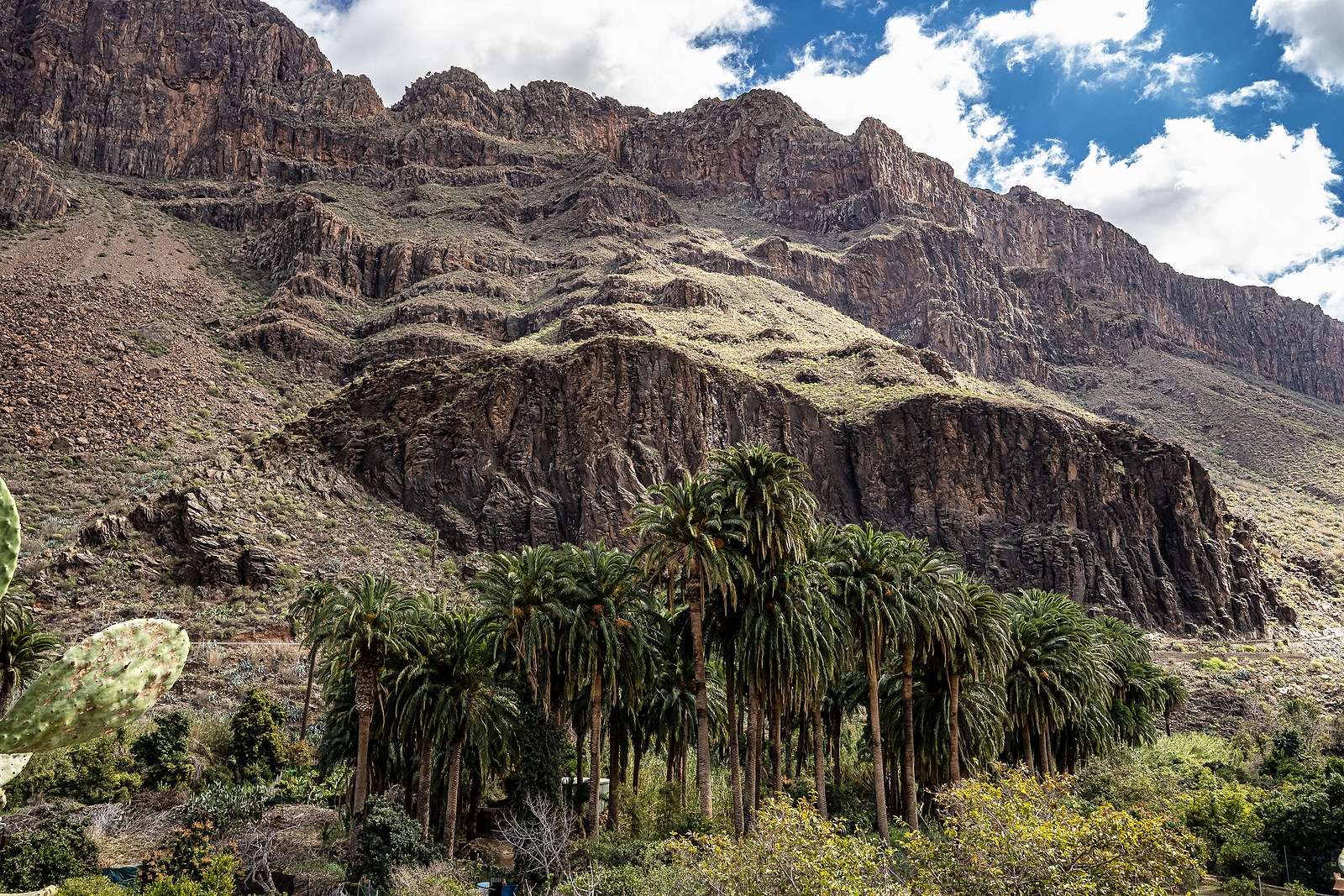

- Directory
- Recent
-
Featured
-
Featured
- Recent
-
- Programs
- Digital Nomad
- Side Gigs
- Resources
Select Page
10 people find this post amazing!

Gran Canaria, Spain weather forecasted for the next 10 days will have maximum temperature of 24°c / 75°f on Sat 16. Min temperature will be 14°c / 58°f on Thu 14. Most precipitation falling will be 2.70 mm / 0.11 inch on Fri 22. Windiest day is expected to see wind of up to 31 kmph / 19 mph on Wed 13. Visit 3 Hourly, Hourly and Historical section to get in-depth weather forecast information for Gran Canaria, Spain.
The plan of the government, as expressed by prime minister Prayut on 11 October 2021, was to open the country from 1 November 2021 for tourists from a selected number of countries. Although initially, people from a limited number of countries (later modified to more countries, divided into different categories) were allowed into the country, entry for visitors was conditional: only fully vaccinated persons, and a negative test for Covid before departure. Also, a test for Covid will be arranged on arrival or soon after.
Visitors are allowed to travel around the country (although we think some regions may be off-limit if there are a lot of local Covid infections). Most importantly, there are no requirements for quarantine on arrival for vaccinated visitors from 46 countries (later, more countries became eligible), as has been the case.
The number of tourists visiting Thailand increased from 35.35 million in 2017 to 38.28 million in 2018 and 39.92 million in 2019. The increase in visitors from 2018 to 2019 was limited to 4.24 %, less than Thai authorities expected. The ever-rising number of tourists arriving came abruptly from March 2020 onwards. 2020 saw only 6,702,396 tourists, almost all arriving in the first three months of the year. No tourists were allowed in from March 2020 to the end of August 2020. After that, in the last three months of 2020, 10,822 tourists arrived under extraordinary stringent conditions.
Many people in the hospitality sector have lost their jobs and are in dire straits. Like 2020, 2021 was a dismal year with hardly any visitors arriving, but now as mentioned above, we have the ‘opening’ of the country from 1 November 2021. This appears to have been an audacious move since, at the time of the initiative’s announcement, a new wave of Covid-19 (the delta strain) was hitting the country hard, much more so than during the initial infections during 2020. But it likely needed to be done since lots of people (and a lot of smaller SME companies) have a significantly reduced income, and the government has limited resources to continue providing for them.
Tourism plays an ever more critical role in the Thai economy. The National Economic and Social Development Council (NESDC, recently renamed from NESDB) stated begin February 2019 that Tourism accounted for 18.4 % (or close to one-fifth) of the GDP of Thailand. It had risen from 14.2 % of GDP just four years earlier. Thailand expected more income from its tourism sector than ever. It was never enough. However, as we know now, the Covid-19 pandemic ended that, at least for a few years.
Buenos Aires is Argentina’s largest city and capital and the second-largest metropolitan area in South America. It sits along the western shore of the Rio de la Plata estuary and is not a part of Buenos Aires Province or the capital of the Province; Buenos Aires is an autonomous district that was granted autonomy in 1994. Its official name is Ciudad Autónoma de Buenos Aires or the Autonomous City of Buenos Aires. In 2016, the estimated population of Buenos Aires was 2,891,000.
In 2010, Buenos Aires had an official population of 2.89 million in the city proper, growing very modestly to an estimated 2,891,000 in 2016. As a result, the metropolitan population jumps to just over 13.5 million and includes an area of over 3,800 square kilometers.
The city has about 13,680 people per square kilometer (34,800/square mile), but this density drops to just 2,400 per square kilometer in the suburbs. The Buenos Aires metropolitan area is home to about 13.5 million people.
Since 1947, the population of Buenos Aires has stayed around 3 million because of slow migration to the surrounding areas and low birth rates, but the neighboring districts have seen a fivefold expansion.
As of the last census, the racial composition of Buenos Aires was:
Most of the population is of European descent, with the most common ethnic origin groups being Italian and Spanish. Interestingly, Buenos Aires has the largest Jewish community in Latin America and the second largest in the Americas.
The census in 2001 also showed that Buenos Aires has a somewhat aged population, as 22% of the population was over 60 years old. Again, this is pretty comparable to most European cities, but Buenos Aires is older than Argentines.
The largest religion in Buenos Aires is Roman Catholicism. The former Archbishop of Buenos Aires, Jorge Bergoglio, was even elected Pope of the Roman Catholic Church in 2013. It’s believed that around 20% of the city’s population is a practicing Catholic. There are also Jewish, Protestant, Orthodox, and Muslim communities in Buenos Aires, which is home to the largest mosque on the continent.
I was in Las Palmas for three months during spring. I volunteered in an hostel and there were many people working online. The Canaries offer great options for short trips to the other islands, that are all very distinct and also on Gran Canaria itself there is a lot to do!
You can reach many places with a bus, but at times it is much easier to share a car, especially to get into the mountains! Really liked the city bikes, too!
Best place for nomads in Spain. The nomad scene is incredible, and the people pretty friendly. The beach is really nice for a city beach and you can be on it all night. The clubs are fun as well. Food could be better but you get all the traditional Spanish staples here. Make sure to join the slack group “Live it Up Las Palmas” to learn about all the different events each night that the nomad community puts on. Flavio and Nelly are the best!
Had such a great time in Las Palmas. Great weather all year round, relatively cheap, easy to connect to locals and other nomads, many things to do like surfing, hiking and going out directly at the huge beach. Looking forward to go there again.
There’s a good nomad scene here. I think the city is under rated on this website. Weather good all year, safe, friendly locals, good internet (I have fiber 600mb in my apartment) and it’s affordable compared to many cities. There’s a community facebook page that is quite active with events organised every week – Gran Canaria Digital Nomads. Check it out you won’t regret it 😉
If you’re pleased to lease a space or little apartment or condo without an ocean view, your leasing expenses will be inexpensive. In addition, if you prepare most meals and are not much of a party-goer, your living expenses will stay low.
For many digital nomads who discover a balance between easy and high-end, you’ll be looking at around EUR1200 ($ 1500) a month for lease and all living expenses, consisting of a coworking subscription.
The Canary Islands are more affordable than other parts of Europe and the United States, specifically the huge cities. You can most absolutely have a far better lifestyle in Gran Canaria if you’re moving from London or New York. However, compared to popular digital nomad areas in Southeast Asia and South America, the Canary Islands have a greater living expense.
Living expenses are broken down
Lodging: $700.
Food: $400.
Commute: $50.
Leisure: $150.
Workspace: $125.
Consuming out here is not especially inexpensive and remains in line with many other European locations. For example, a meal in a regional coffee shop is around EUR9; however, in a pricey, sophisticated dining establishment, it could be approximately EUR50.
Coffee in a coffee shop costs about EUR1.50, making working from a coffeehouse cost-effective. Grocery rates are not that varied in many Western nations; however, alcohol is quite low-cost, around EUR2 for a regional beer and EUR5 for a mid-range bottle of red wine.
Navigating does not require to be costly, thanks to the low compensation. A one-way ticket expenses around EUR1.50, or you can get a regular monthly pass for EUR35. If you lease an automobile or scooter, anticipate paying about EUR1 per liter of gas.
All your month-to-month expenses integrated must not go beyond EUR100, presuming you’re residing in a basic-sized home. A house Wi-Fi plan will be around EUR50 a month.
You will then require to consider your leisure expenses. A health club subscription is quite inexpensive at about EUR35 a month.
There is a fantastic mix of residents and immigrants living in Gran Canaria. According to a 2019 information report, 2,153,389 homeowners in the Canary Islands, of which 36,516 are foreign.
The residents of Gran Canaria (and the other Canary Islands) descend from a mix of Spanish inhabitants and aboriginal Guanche individuals. The Guanches were the very first recognized occupants of the Canary Islands and were understood for their love of singing and dancing. In addition, they were friendly individuals, had deep regard for their seniors, and had a strong household bond.
The household system is of the utmost value for the individuals of Gran Canaria; however, they value their relationships extremely too. Therefore, you will typically see Canarians households taking pleasure in long suppers in regional dining establishments for no specific celebration but to commemorate a life.
The residents are never in a rush, and many ex-pats who move here do so as they are looking for an easy-going location to live. Like in mainland Spain, residents will flock to the beach on the weekends, although they will prevent the traveler resort.
This is because they tend to mingle within their households and have the same relationship group, given that they were young. So if you desire to make pals with the residents, the simplest method would be to get included in the neighborhood through offering or assisting out.
That being stated, there is a specific season when residents and foreign citizens come together. The Carnival of Las Palmas happens every February. Throughout this month, there are continuous events open to all in the city’s streets.
Are you preparing to relocate to the canary islands with children? Gran Canaria is a family-friendly and simple location for digital nomads with households to base themselves.
Most ex-pats and residents live in houses with no outdoor location, especially in Las Palmas. This is not a perfect house environment for households. If you desire a home with a garden, you’re more likely to discover one in the island’s south or the smaller-sized towns.
Schools & daycares
Unless you’re preparing to live forever in Gran Canaria, it would be best to put your kids in among the worldwide schools on the island. These schools are expensive; however, your kids might have a hard time in a state school, particularly if they do not speak Spanish!
The island has 4 English-language worldwide schools– the British School, Canterbury School, Oakley College, and the American School. The majority are on the borders of Las Palmas; however, the British School and Canterbury School have infant schools in the south too. There are likewise German, French, and Norweigan schools on the island!
Multilingual schools are a more affordable choice. There are lots of personal nursery schools; however, the quality varies.
Activities for kids
Since Gran Canaria is a popular household vacation location, you will discover many enjoyable activities for your kids.
Waterparks: There are several water parks on the island. Some have different locations for young kids, so they are appropriate for any age.
Angry Birds Activity Park: This Angry Birds-themed theme park in Puerto Rico has zip-lines, climbing up frames, go-karts, a laser labyrinth, and more!
Vacation World _ This theme park in Maspalomas has more than 30 destinations, consisting of a Ferris wheel, bumper cars and trucks, and a rollercoaster. This conventional funfair likewise includes a bowling alley and places different programs.
Palmitos Park: This is a popular zoo in Maspalomas with numerous mammals, reptiles, and birds. They likewise use dolphin encounters where kids and grownups can swim with dolphins.
Camel Safari: Another animal activity that your kids will delight in is riding a camel throughout the dune of Maspalomas.
If you’ve ever been to the Canaries, you’ll currently have an excellent concept of whatever they need to use. So naturally, therefore, moving there completely implies weighing up both the pros and cons before choosing.
While none of the disadvantages are significant, they’re worth thinking about before driving to island life. So here are the advantages and disadvantages of surviving in the Canary Islands.
1. Lots of beaches
The most apparent benefit of surviving on an island is the large variety of beaches. You’re never too far from one, indicating it’s extremely simple to organize an unscripted journey whenever you seem like it. Moreover, as soon as you move there, you’ll have the ability to invest a long time discovering the lesser-known gems.
2. Incredible environment
As pointed out, the Canaries seldom have what numerous would think about winter. They gain from their distance to Africa and the sea, which leads to warm, constant weather conditions. You will discover microclimates at greater elevations, so make certain you own a minimum of one sweatshirt!
3. Consuming out is low-cost
If you’ve regularly got excellent weather conditions to take pleasure in, then you’ll most likely desire loads of terrific dining establishments to check out. Well, you’re in luck, as the Canaries have a lot of fantastic (and economic) dining establishments. Certainly, seafood is big here; however, there’s no scarcity of meat and vegetable choices.
4. Taking a trip is simple
Gas rates are low, making owning a vehicle a rewarding cost. Public transportation isn’t pricey either, and taking a trip between islands is very simple. There are a lot of aircraft and ferryboats, making the outing a breeze.
5. Classy health care
The Canary Islands are a self-governing area under Spanish guidelines, and Spain is understood to have top-quality health care. This reaches the Canaries, too, especially locations like Tenerife. If you desire access to public health care, you’ll require to be a Spanish local; however, the personal centers are likewise extremely high quality.
1. Really tourist-heavy
The Canary Islands are heavy on tourists. While this isn’t the worst thing ever, it does indicate all over is hectic in the summer season, when numerous companies operate on seasonal schedules. So if you’re thinking about residing in the Canary Islands, you’ll need to make your peace with the tourist boom.
2. Island life takes modification
However, it may appear apparent that surviving on an island does take some change. It’s impossible to jump in your car and truck and escape for a weekend like you can residing on the mainland. After a while, some individuals may discover island life a bit claustrophobic.
3. Sluggish rate of life
This isn’t always a con; however, it can take some change if you’re originating from a hectic nation. There isn’t an idea of “now”; the earliest you’ll most likely get something is within a day approximately. After a couple of months, you will not even discover this as an issue.
4. Very little high culture
Once again, this isn’t a disadvantage; however, if you desire nighttime operas and ballets, the Canary Islands aren’t for you. Much of their economy is tailored towards tourists, so believe bars, dining establishments, and the odd club. However, performances do occur typically in the summertime season and normally just on the primary islands.
Table of Contents

Achieve Your Goals Now!
